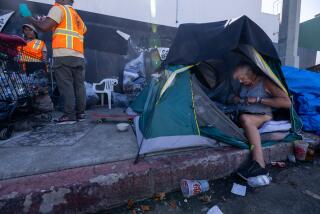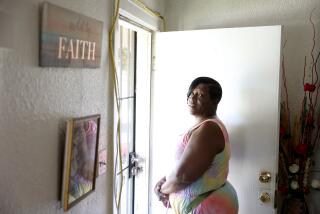Runaways Need More Guidance, Experts Say
- Share via
Society’s failure to help thousands of runaway teen-agers who live on city streets leads many youths to crime and drug addiction, placing a tremendous financial burden on taxpayers, a panel of authorities said Thursday in a Hollywood forum.
It costs about $50,000 per year for the Los Angeles County Probation Department to house and provide services for each juvenile in its custody--enough money to pay college tuition for several teen-agers, said John Hudson, a placement coordinator in the Probation Department.
“Why get these kids into the justice system if we can keep them out?” Hudson asked.
Hudson and other panelists representing the courts, the Los Angeles Police Department, California Youth Authority and the Salvation Army said early intervention is crucial to prevent homeless, runaway teen-agers from becoming burglars, robbers, prostitutes and drug addicts.
The Salvation Army, which sponsored the event, estimates that 20,000 to 25,000 teen-agers are living on the streets in California, including more than 10,000 in Los Angeles. Those figures, officials said, are based on a 1991 study by the National Assn. of Social Workers and information compiled by Hill & Associates, a firm retained by the Salvation Army Southern California headquarters.
Hollywood, in particular, draws teen-agers because they see it “as a land of glitz and glitter,” Mayor Tom Bradley said in opening remarks.
Although physical and sexual abuse prompts many youths to flee their homes, counseling can help mend rifts within families and encourage children to return home, said Joan Thirkettle, director of The Way In, a Salvation Army program for teen-agers.
“Getting the kids off the street is the essential first step,” said Thirkettle. Unless youths are reached within three or four weeks, she said, they often become victims of crime and then victimize others. Many teen-agers “become involved in drugs because it kills hunger pains from not eating,” she said.
Superior Court Judge Roosevelt Dorn, who operated a widely praised program for incorrigible youths while in the juvenile courts, said creative efforts are needed to reform youths and parents.
“The youngster that is incorrigible today is a criminal tomorrow,” Dorn said. “Why aren’t we worried about the youngster before the youngster crosses the line?”
If problems at home are insurmountable, Thirkettle said, social service agencies are needed to provide shelter, training and guidance for teen-agers to become self-sufficient and law-abiding.
Agencies in the Hollywood area offer only about 36 beds to teen-agers, with the Salvation Army planning to break ground on a 20-bed facility in March, 1993. And California’s 37 shelters for runaways are overwhelmed and threatened by budget cuts, officials said.
Los Angeles Police Detective Rick Papke, who works frequently with agencies providing services for youth, said officers often take teen-agers into custody as a precautionary measure because they are potential victims. Officers spend several hours booking them into juvenile facilities.
“We ought to be able to take them to The Way In and spend 15 minutes,” Papke said.
More to Read
Sign up for Essential California
The most important California stories and recommendations in your inbox every morning.
You may occasionally receive promotional content from the Los Angeles Times.










